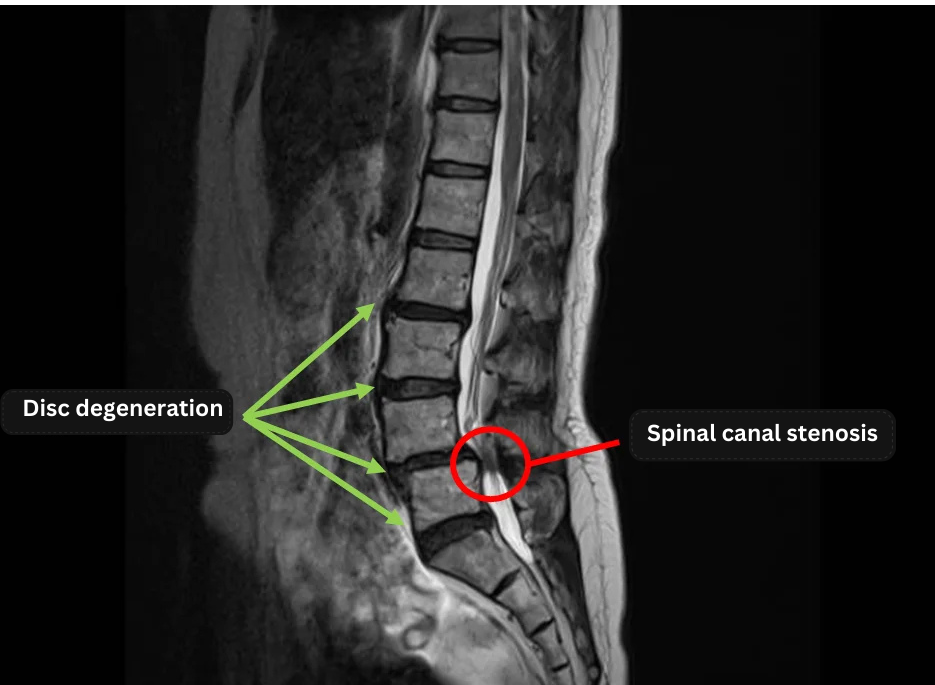Column Treatment Case Report No. 55| ILC International Lumbago Clinic (Tokyo Clinic)
March 14, 2023
The case of a patient who came to our clinic for treatment because her pain recurred after PLDD had been performed on her at another clinic.
The patient
A female patient in her 60s.
The patient’s medical history to date
In 2007, the patient ‘s pain became mild after PLDD was performed at another clinic.
In 2015, she sustained a back injury and was unable to move at all, so she visited an orthopedist and was given painkillers and told to monitor her condition.
A year or two ago, her back pain aggravated, and she came to our clinic after rehabilitation and other measures failed to help her.
Symptoms before treatment
She is able to walk between 100 and 500 meters, and sometimes more than 500 meters, depending on the day.
Symptoms tend to intensify some time after starting to walk.
・Pain levels before treatment
| Lower back | Lower limbs | Numbness | Buttocks | |
|---|---|---|---|---|
| Pain level | 7~8 | 7 | 6 | 7~8 |
No pain at all is rated as 0, and the maximum possible pain is rated as 10.
Main areas of pain and numbness: from the left hip to the left lower limb. Numbness is present from the side of the knee to the outside of the calf.
・Daily activities
It is very difficult to sit in a semi-crouched posture and to lift up heavy objects.
Some difficulty in standing up and washing one’s face.
Symptoms often intensify in the evening.
Imaging and findings

- L2/3, 3/4, 4/5, 5/s – disc degeneration
- L4/5 – spinal canal stenosis due to anterolisthesis of the fourth vertebra
・L2/3 – disc degeneration was observed. Also, as a preventive measure since cracks in the annulus fibrosus was observed.
・L3/4 – Intervertebral disc degeneration is present, and the patient should be treated conservatively.
・L4/5 – spinal canal stenosis is present and may be a probable cause of the pain and numbness.
・L5/s- disc degeneration is present, and conservative treatment is indicated at this stage.
Based on the examination and imaging findings, we proposed the above treatment.
Treatment
The Cellgel Method was performed on L2/3, 3/4, 4/5 and 5/s.

This is an image of the patient’s back after the Discogel injection.
The treatment took about 40 minutes.
After resting in the recovery room, the patient was able to walk home by herself.
Our clinic’s treatment method
Additional information about the Cellgel method we have introduced in this column.
Cost of the Cellgel method: 1,320,000 yen per area (including tax) to 1,760,000 yen per 5 areas (including tax)
Risks and side effects of the Cellgel method: Transient pain may occur after treatment. Nerve damage is not a zero possibility due to the very nature of the treatment, but there have been no reports of damage so far in either report cases or publications. There is a very small possibility of allergic reactions to local anesthetics. Symptoms may temporarily worsen during the first week or two after treatment. This is believed to be due to the decompression effect of the implant, which retracts the surrounding tissues. In addition, if the disc is almost completely collapsed, treatment may be difficult. The doctor hold a consultation with you during your visit to the clinic to determine the best treatment option for your condition.
For more detailed information, please refer to the following links:
Blog page explaining the Cellgel Method in an easy-to-understand manner
The Cellgel Method on our treatment methods page
This article was written by the Administrative Director of our clinic



